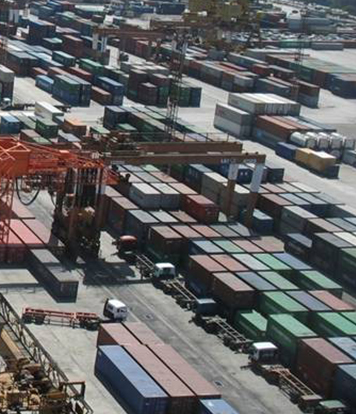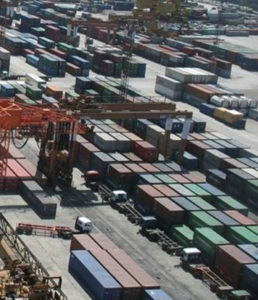

The proposed P9.3-billion Cebu International Port (CIP) to be situated in Barangay Tayud, Consolacion was approved by the National Economic and Development Authority (NEDA) Investments Coordination Committee-Cabinet Committee (ICC-CabCom) on September 28.
A day later, the municipal government of Consolacion signed a memorandum of agreement (MOA) for a joint venture (JV) contract with Mega Harbour Port and Development Inc to construct a P16.459-billion international container port and bulk terminal also in Tayud, Consolacion, about 12.5 kilometers from Cebu City. Consolacion mayor Teresa Alegado, Mega Harbour chairman Red Romero II and Mega Harbour president, Engineer Victor Songco, signed the MOA.
The agreement between Mega Harbour and the local government of Consolacion is, however, in danger of being disregarded by the Cebu Port Authority (CPA), according to its general manager Edmund Tan, because it is similar to the one approved by the ICC.
Tan noted CPA was not informed of the MOA signing by either Mega Harbour or the Consolacion local government.
Under the CPA Charter (Republic Act No. 7621), only the CPA can manage, operate, maintain and develop ports and port facilities in the entire province of Cebu.
Mega Harbour’s Cebu International Container and Bulk Terminal, under the public-private partnership program, will involve the reclamation and development of about 85 hectares of land (expandable up to 150 hectares) in Tayud where a 1,200-meter long berthing facility will be constructed.
The raw land reclamation works for Phase 1 is expected to be completed in two years, and the development works for Phase 2 in another year and a half.
Apart from the CPA, the project requires approval from other government agencies.
Mega Harbour is a subsidiary of the R-II Group of Companies, which is engaged in infrastructure, housing and property development, port operations, waste management, and environmental projects, among others.
On June 29, Mega Harbour also inked an agreement with then Davao Mayor now Philippine President Rodrigo Duterte to develop the P39-billion Davao City Coastline and Port Development Project, which will turn the coastline of the city from Agdao and Poblacion districts to Barangay Bucana. The project covers the development of 214 hectares of coastline into four-island projects.
At least 70 hectares will be developed into a port catering to both international and domestic containers.
ICC-approved project
Meanwhile, in a text message to PortCalls, confirmed that the ICC-CabCom approved CPA’s CIP project at a September 28 meeting, “with some requirements to be addressed while moving forward for the approval of the said project by the NEDA Board.” The NEDA Board is chaired by President Rodrigo Duterte.
“We just have to wait for the official communication of the ICC secretariat on this,” Tan added.
The construction of a new Cebu international terminal has long been seen as a long-term solution to the congestion at the current CIP. Several feasibility studies, the most recent one by the Export-Import Bank of Korea, suggested locating the new sea hub in Tayud.
Tan earlier this year said that despite improvements at CIP, “congestion at the CIP and its road network has become more serious due to increasing cargo volume.”
READ: Proposed Cebu container terminal essential for growing trade
CIP has been experiencing berth and yard congestion since 2014 due to the increase in cargo volume, high dwell time of containers, limited yard space and backup area, and truck bans. Yard utilization, however, has improved, hovering between 30% and 40% this month.
“The proposed New Cebu International Port is expected to provide a lasting solution to cope with congestion at the existing Cebu port and the shallow water depth of the Cebu international container berths,” Tan pointed out.
The container hub will feature an operations building, container freight stations, a customs inspection section, a maintenance factory, and a power supply substation.
Tan noted that the project, which is included in NEDA’s Comprehensive and Integrated Infrastructure Program, has an implementation period of 2017-2020.
The Regional Development Council-Central Visayas Region through Resolution No. 55 (series of 2015) dated December 11, 2015 endorsed funding the project through official development assistance.
Tan said the new port will need assistance of the local government of Consolacion and Department of Public Works and Highways to establish an access road connecting it to the Cebu North Coastal Road.
While waiting for the project to start, CPA and CIP cargo handler Oriental Port and Allied Services Corporation said measures to handle the growing volume at the port are being implemented. – Roumina Pablo




